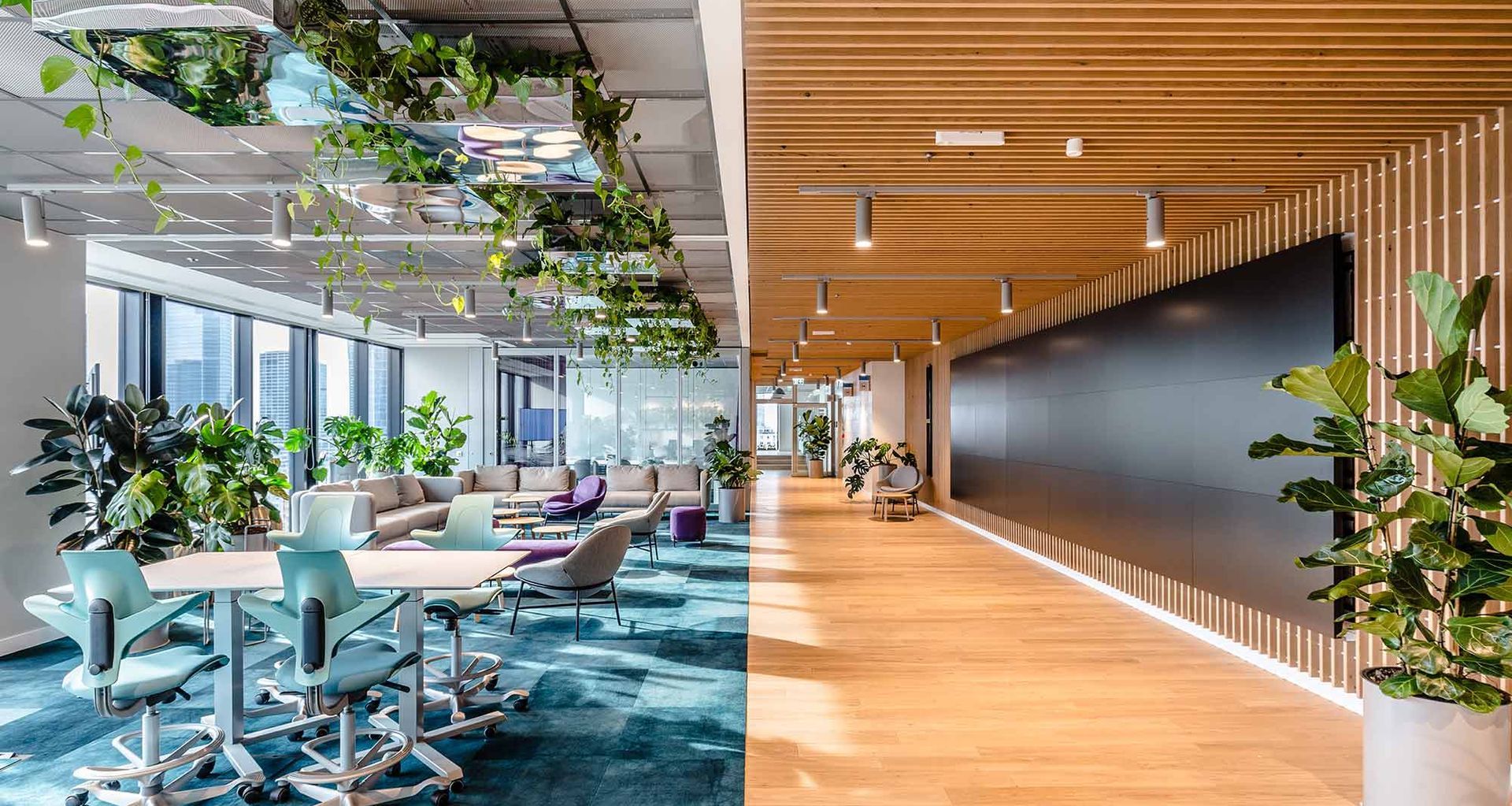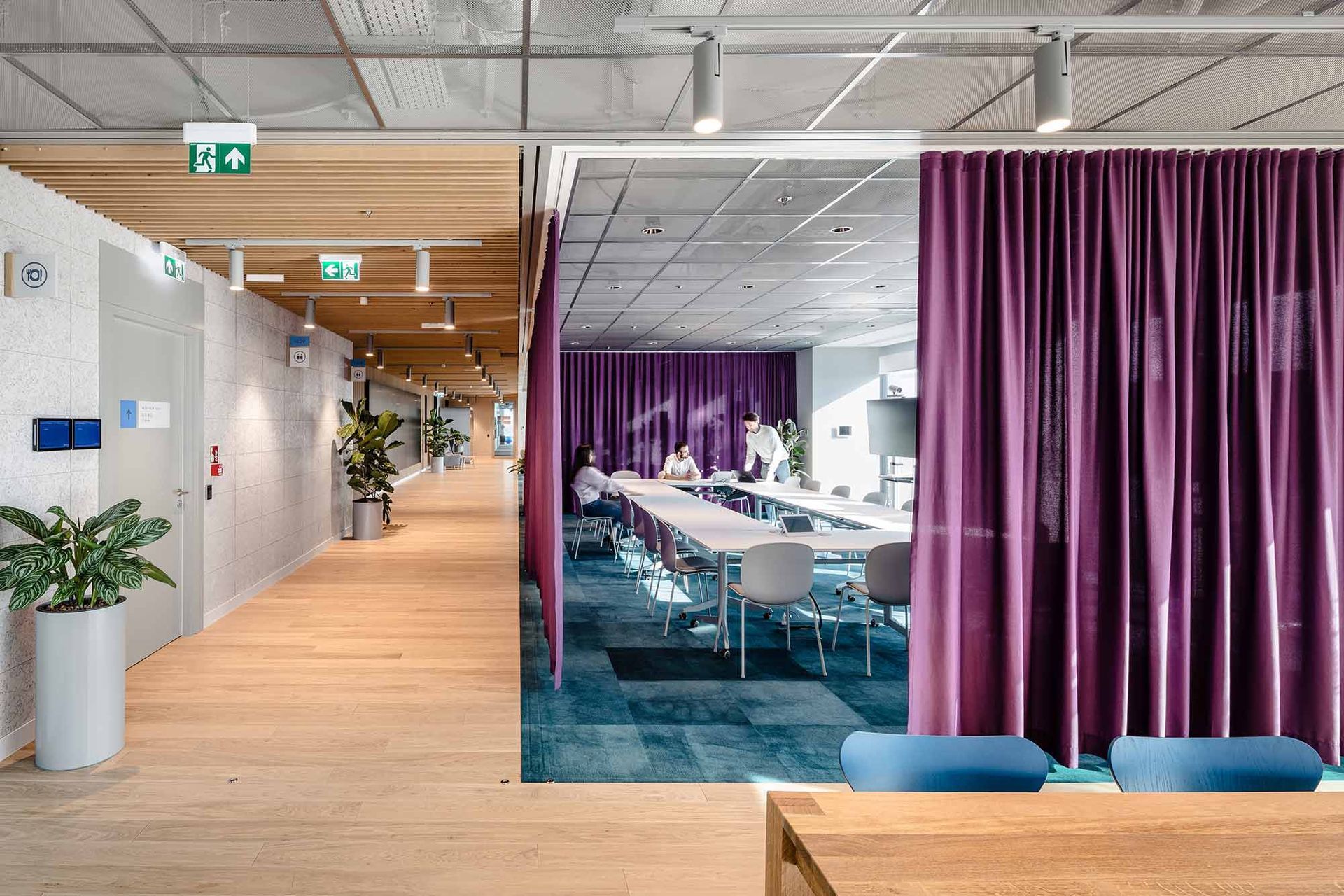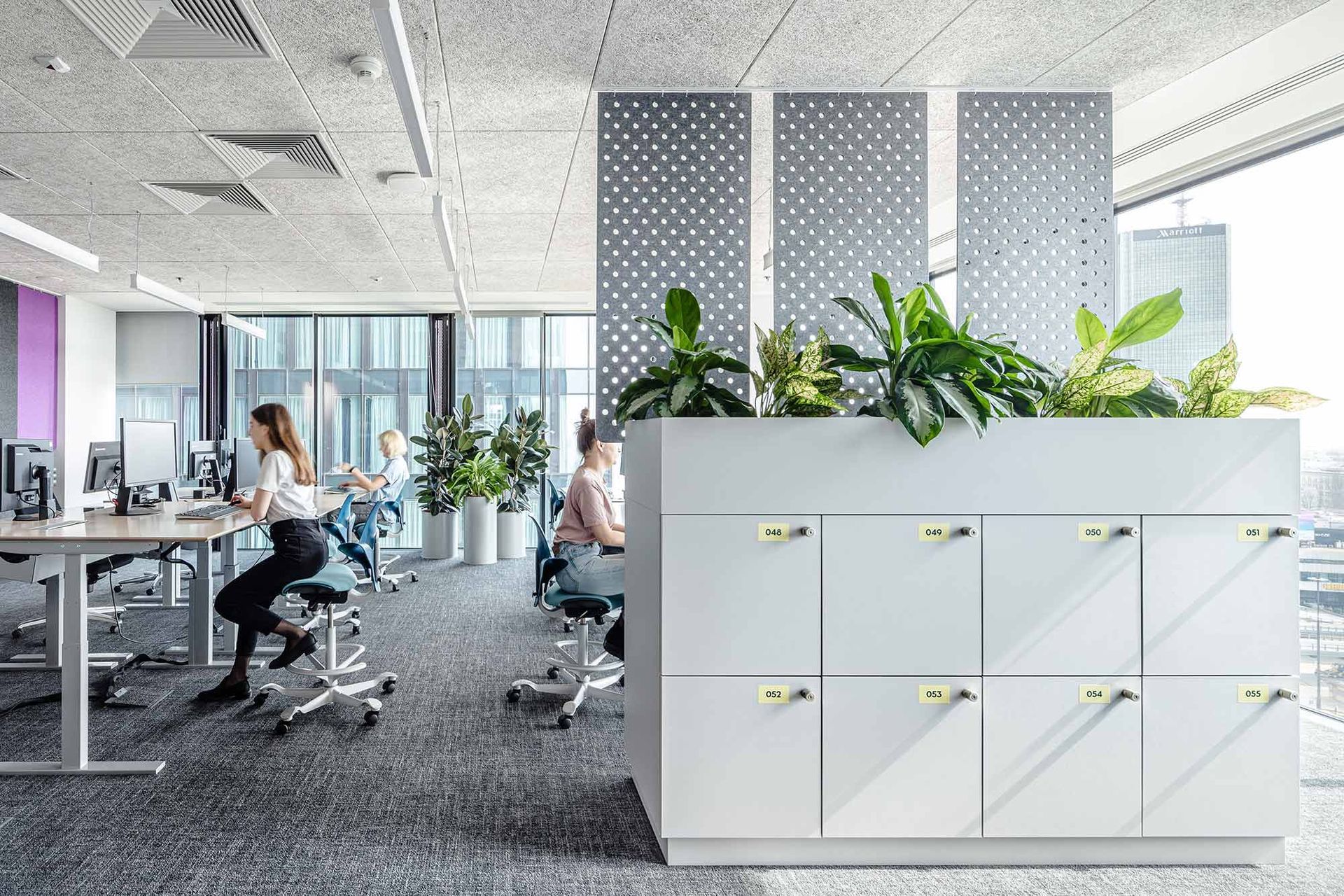Visionary interior architects unveil their second “less waste” office design

Ørsted's new Warsaw office is a reflection of their company values, combining biophilic design and brand aesthetics to emphasise their spirit of innovation, optimism, and a love for nature. Having once been one of the most fossil fuel-intensive energy companies in the world, Ørsted has switched to greener energy production. They are currently the largest developer of offshore wind power, producing 88% of their energy from renewable sources, thus transforming into one of the most sustainable companies in the world, a title they have claimed for three years in a row.
With sustainability a key element of the company, they approached Interior Architects Workplace to help them to imbue their new office space with the same values, building upon their previous work designing the “Less Waste Office”.
The project was based on four strategic objectives to ensure the process and the final design was environmentally friendly, a functional workspace, an environment that promoted wellbeing, and the flexibility to reconfigure spaces easily from individual to collaborative workspaces.

Sustainable Design
Sustainability was the key concern at the outset, and inspired by the 3R’s principle of Reduce, Reuse, Recycle. A detailed inventory of reusable materials from the previous office and warehouses was taken, and working together, the architects, client, furniture suppliers, and developer worked on solutions to make best use of as much of the inventory as possible, reducing unnecessary decorative elements and using less new materials.
All workstations were recovered from the previous office and refurbished. The vast majority of flooring, ceilings and soft seating are from sustainable sources, verified on the basis of their carbon footprint, whilst the large wooden floor in the networking area was reclaimed. 100% of the wall coverings are made of natural cork. 59% of the tabletops are made from compressed PET plastic bottles, with 14% reclaimed furniture board. Carpets, where used, are certified to be made without bitumen content.
Some of the only new pieces of furniture used were specified from Flokk. 178 RBM Noor chairs feature in a range of colours in networking, conference, and meeting rooms, whilst 74 HÅG Capisco Puls chairs were placed in creative and focused workrooms.
Made using recycled and 100% recyclable materials, the RBM Noor is built to last, featuring a robust and easily cleaned design, whilst also providing great support and comfort. This made it a good choice to fit the strategic objectives. Height adjustable and able to fit both low and high desks, the HÅG Capisco Puls was also a natural fit to the workspace solution, pairing its functionality and human-centred design with an equally sustainable and ethical design process.

Function
The meticulous environmental aspect of the project was complimented a well-planned workspace layout. Agile workplace zones are designed as a neutral background for various activities, with nearby chillout zones offering a place to relax. The inclusive design also supports people with disabilities, including lowered kitchen worktops and wide walkways.

Wellbeing
The space meets the principles of human-centered design and provides for the basic components of employee well-being: physical and mental comfort and contact with nature. A transparent functional layout with appropriately placed glazing of walls maximises the ingress of sunlight in the work and rest zones. Natural vegetation is ubiquitous - 1,752 individual plants were used in the project, which equates to nearly 4 plants per employee.
Speaking about the project, Workplace’s Małgorzata Romanowicz and Aleksandra Czarnecka, the authors of the project say; “Ørsted Warsaw Office is a working environment that is effective on many levels - for people, for business, and for the planet."

